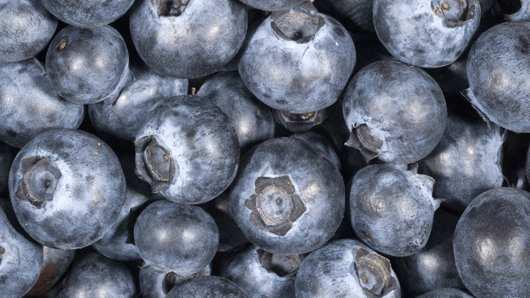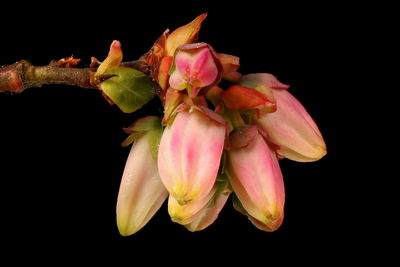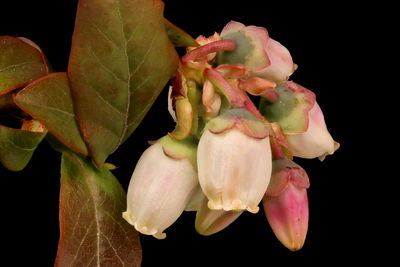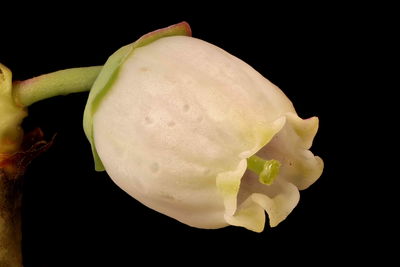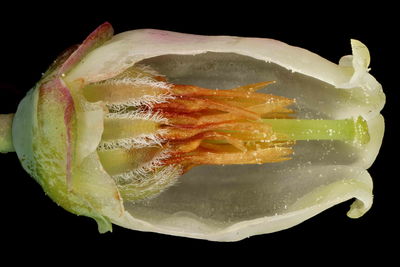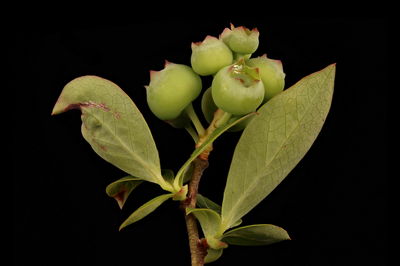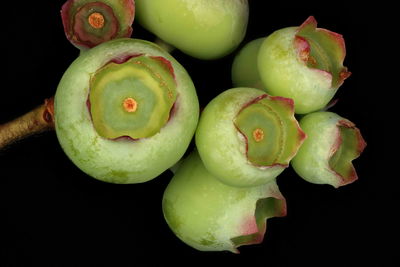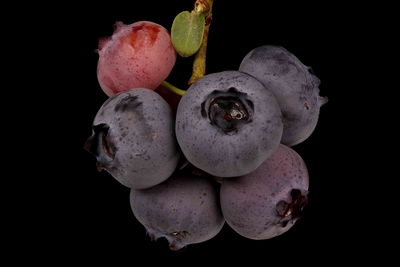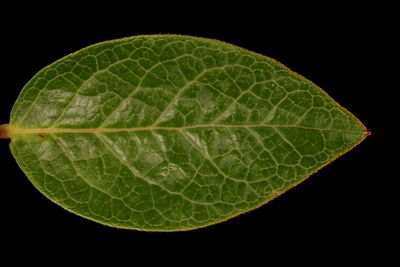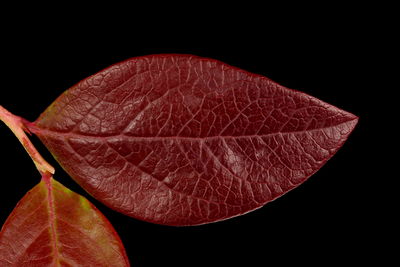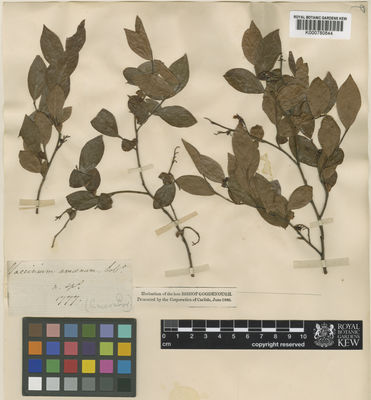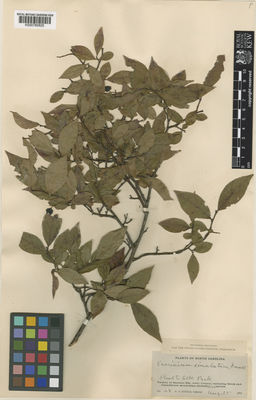Geography and distribution
Vaccinium corymbosum is native to eastern USA and Canada, where it is found at up to 1,600 m above sea level.
It is cultivated in many countries, including the USA, Canada, Europe, Australia, New Zealand, South Africa, Mexico, Argentina, Uruguay and Chile.
Description
Overview: An erect, deciduous shrub up to 1.5 m tall, sometimes producing suckers.
Leaves: Dark green, up to 7.0 × 2.5 cm, slightly leathery, sometimes with sharply toothed margins.
Flowers: Lantern-like (urceolate) with white or pink petals. Stamens (male parts) with hairy filaments.
Fruits: A berry, pale green, turning reddish-purple then dull blue-black on maturity, with a waxy blue-grey bloom, hairless, up to 12 mm in diameter.
Seeds: Viable seeds large, brown, up to 17 per fruit. Imperfect seeds small, pale, up to 38 per fruit.
Uses Food and drink
Blueberry fruits are eaten raw, used to produce juice or processed into products including jams, syrups, pies, muffins, breakfast cereals and cereal bars.
Blueberries contain moderate levels of vitamin C, vitamin K, manganese and dietary fibre. They are promoted as a 'superfood', particularly in relation to their antioxidant properties.
Medicinal
Blueberries contain antioxidant anthocyanins, which have been alleged to increase communication between brain cells, and hence may have a role in preventing age-related memory-loss.
The fruits also contain ellagic acid, which is considered to be potentially effective against cancer.
Ornamental
Blueberry is also cultivated as an ornamental and makes a good container plant or border shrub. In addition to the attractive flowers and foliage of many cultivars, growers benefit from a harvest of edible fruits.
Cultivation
Mature blueberry seeds should be placed on top of a peat-sand (in equal parts) mixture and kept in a misting chamber. When the seed-leaves emerge, the pots should be moved to a greenhouse bench and watered daily.
Blueberry can be grown in acid soils (with a pH of 2.7-6.6) and tolerates low levels of nitrogen and phosphorus.
This species at Kew
Blueberry can be seen growing around Kew's Woodland Glade and Waterlily Pond.
Pressed and dried specimens of Vaccinium corymbosum are held in Kew's Herbarium where they are available to researchers by appointment. The details of some of these specimens, including images, can be seen online in Kew's Herbarium Catalogue.
A specimen of wood from Vaccinium corymbosum is held in Kew's Economic Botany Collection in the Sir Joseph Banks Building, where it is available to researchers by appointment.

